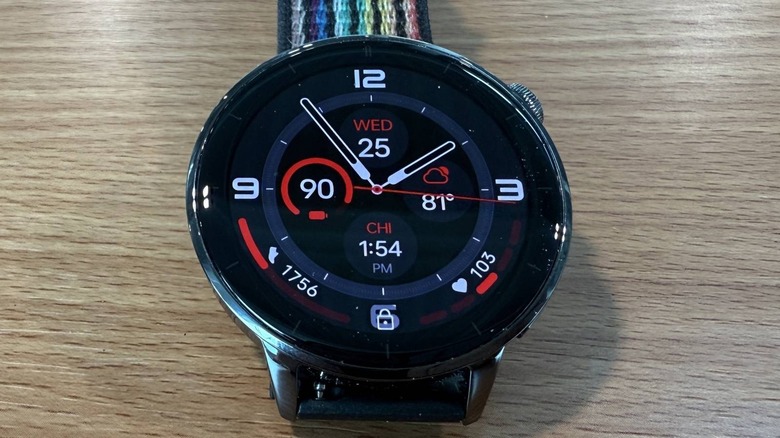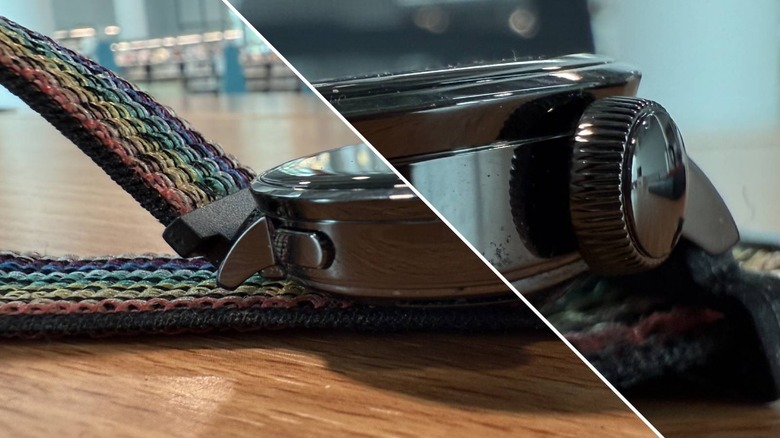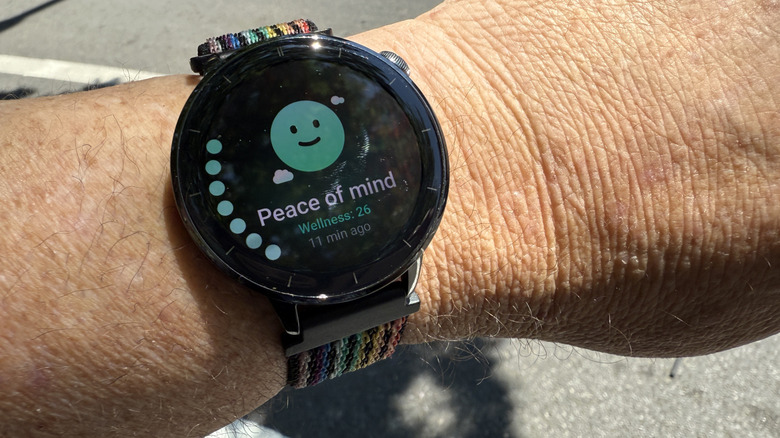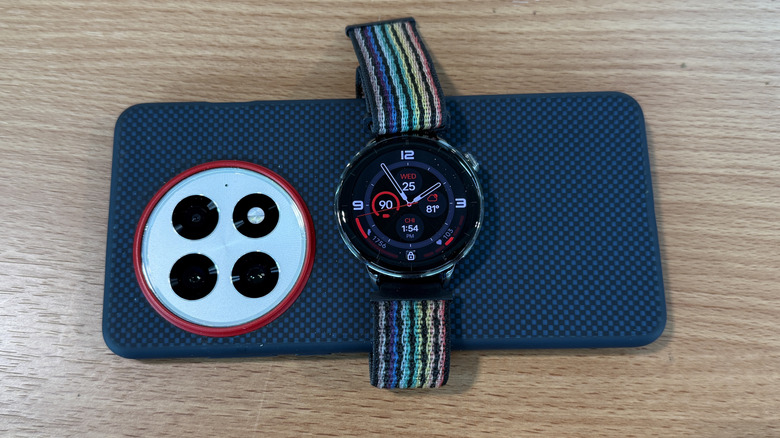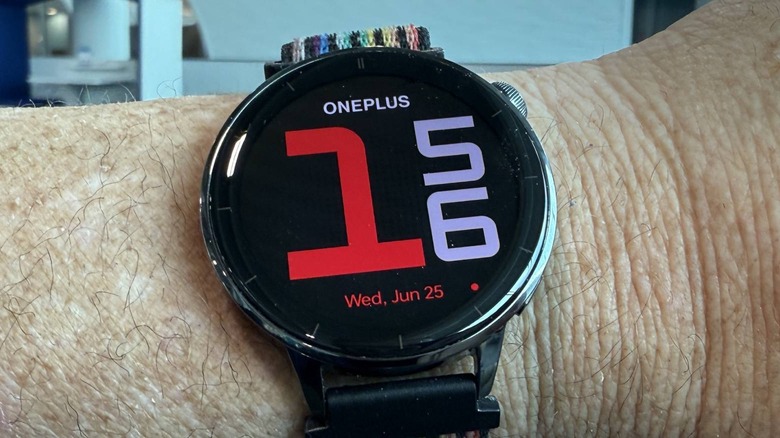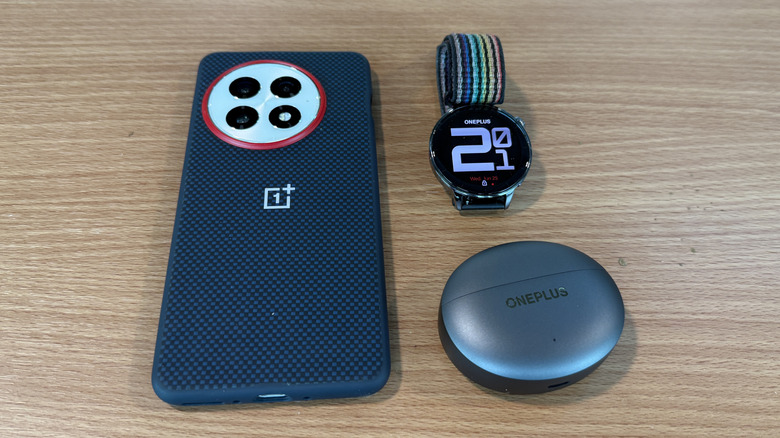OnePlus Watch 3 (43mm) Review: Compact Android Smartwatch Takes One Big Feature Hit
We may receive a commission on purchases made from links.
Earlier this year, OnePlus launched one of the most interesting wearables to date, mostly because of its exceptional battery life. The OnePlus Watch 3 uses dual-chip architecture to use one high-powered processor for the "smart stuff" and offloads most of the basic functions to a much more power efficient processor. It does this in a seamless way, so if I hadn't just told you there were two processors, you wouldn't notice.
When I reviewed the OnePlus Watch 3, I noted that I was "pining for OnePlus to launch a smaller OnePlus Watch 4." Well; wish granted! Now OnePlus has launched a newer, more svelte version of the watch, creatively enough called the "OnePlus Watch 3 43mm." The key difference, as you may have guessed, is (mostly) in the size. If you've read my OnePlus 3 review, you already know a lot, but not everything. There are a few other tweaks to it, including the price tag.
I've been using a OnePlus Watch 3 43mm review sample provided by OnePlus for two weeks, and this is my full review.
Design tweaks
I like the overall design of the watch, which combines the best of a few different worlds. The round watch face has tick marks around the periphery which replace the numbers from the Watch 3. Tick marks still feel superfluous — it's a digital watch after all — but at least they're more understated.
The watch retains the same two buttons as well. This time the buttons come out of the watch bezel rather than being slightly canted like on the larger version. Don't get me wrong; the button placement doesn't bother me on the larger watch — or at least it didn't until this watch came along — but it gives the smaller watch a cleaner look. The larger watch is certainly more distinctive, but if I had to choose one or the other, I prefer this look.
The lugs on this watch are also more friendly for third party bands. The larger version has a design that benefits from having a watch band that molds to the case, so a third-party band looks funny or incomplete. The lugs on this watch are more standard, but they're also 18mm lugs. I didn't have any 18mm bands in my collection, so I had to head to Amazon to order a fresh set.
Be well
The watch functions much like its larger sibling, which is to be expected of course. The smaller watch adds a new wellness widget, which feels similar to a body battery kind of thing like on a Garmin watch, but cuter.
The wellness indicator gives you a wellness score — I'm guessing it's from one to one hundred, though I've never seen it above 80 or below 20 which could be its outer limits, or just an indicator that I'm pretty even keeled. Along with the wellness score comes a little emoji face, either happy or sad or neutral that corresponds with the score.
Like the body battery, I like this type of holistic wellness, as opposed to a stress score, heart rate, O2, and other individual metrics. That data was its uses, but on a day-to-day scale for someone like me who doesn't work out and isn't necessarily concerned with those metrics, an overall "you feel like crap" score that validates how you're actually feeling is a good thing to have — and it's accurate.
When I felt like crap; it told me I felt that way. When I didn't, it reflected that as well. Some will let such a score adversely affect their behavior, as in, "my watch tells me I'm not feeling great so today is going to be a bad day." I'm more of the attitude of "my watch tells me I feel bad, and I do, so what can I do to feel better?
Watch settings
The one thing OnePlus still has a bit of trouble with is flexibility — and to be clear, I realize this is not an "average joe" problem. The "OHealth" app can only link to one watch at a time. What this means is, if you're going from one OnePlus watch to another, you have to either transfer or wipe your first watch before you can connect a second. This is a minor point, but is there really a reason why you can't connect a second device?
I also ran into an issue transferring the watch from one phone to another — something I have to do frequently, but again, not really an average person problem. One time when I tried to transfer the watch, it just wouldn't initiate the process. This happened on both the watch and on the app. It was also rather passive-aggressive about it and just wouldn't do it — not unlike my teenage children. Again, this only happened once when I tried it, and I had this watch connected to three different phones during my review period, so it's not bad.
Unfortunately, in order to actually move the watch, I had to wipe it. That means my watch face, all the settings I turn on, etcetera, all went the way of the dodo. It's not the worst thing in the world, and likely a problem unique to someone who changes hardware frequently, but still notable.
The one pain point
That brings us to something that isn't surprising, but still a tad disappointing. The battery life on the watch took a pretty big hit vs its slightly-larger predecessor. Of course, part of that is due to the watch being physically smaller; I totally get that. But while the biggest version of the watch can safely get four to five days with one charge, the smaller version is much worse. First, I need to add some caveats.
First, most of my testing of the watch was done on the road. I wasn't sitting at home on wi-fi all the time. I was out walking around, getting my heart rate up, forcing the watch to look for wi-fi, and the like. Second, while traveling, I usually use a watch face with six complications that can put additional strain on the battery life. Finally, I also leave Always-On Display active. I never used to, but the OnePlus watch 2 got me into the habit.
Second, when the watch is reset, it defaults to as many battery-saving tricks it can — AOD off, SPO2 off, etc. I went a couple of days forgetting about that, so my battery life got better; what a surprise! Once I turned all those features back on, it went back down.
So I ended up getting around half the battery life — two to two and a half days per charge, which is a big downgrade from the five days I got from the other watch. That figure is better than something like the Samsung Galaxy Watch Ultra, or the Apple Watch Ultra 2, but only just. The fact that this watch is a lot more svelte than both of those helps, but it's a big trade off.
OnePlus Watch 3 43mm Price, availability, and verdict
The OnePlus watch retails for $299 in the U.S. at OnePlus.com and Amazon. If you buy the watch through the company's website, you can trade in any device in any condition for an extra $50 off. That's a good price for this watch, but it's only $30 less than its larger sibling. I'm not an engineer, nor do I play one of TV, but the watch feels like it should be cheaper compared to the larger one, mostly because of the battery life hit.
Again, two and a half days is good for a Wear OS smartwatch, and this watch does it without being chunky like the Ultras, so that's good. But I just feel like the battery life took too much of a hit. With the larger watch, I can leave for a trip and not worry about bringing a charger; not so here. But the smaller size is more fashionable, and more comfortable, so maybe that makes up for it in your mind.
